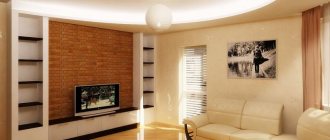Ceiling chandeliers
Lighting devices with built-in LEDs of this group are the most popular and in demand. In ceiling chandeliers, the main light source can be ordinary incandescent lamps. It is possible to change them to LEDs.
You can carry out the repair yourself. The same can be done with halogen lighting fixtures. LEDs burn very beautifully, which is why chandeliers with them are very popular among users. Lighting lamps of this type emit a gentle light that can be of different shades.
One LED chandelier can have different colored lamps. Most often, lamps of red, blue and green shades are used for this. The combination of these colors in ceiling devices is the brightest and most contrasting. Since LEDs do not burn strongly and do not irritate the eyes, they can be used as night lights. Ceiling lighting fixtures are often installed in children's rooms. Kids love to have colorful lights in their room. LEDs, varying in lighting and power, for a chandelier can be bought at any electrical store.
Frequent breakdowns
In practice, various types of breakdowns often occur:
- the LED lighting device does not work at all, neither from the remote control nor through the switch;
- Switching on via the remote control does not work;
- some commands sent from the remote control are not executed;
- a weak or dim glow is visible;
- blinking is observed;
- Clicking noises are heard when switching.
If these or similar breakdowns occur, you should try to figure out the cause of the breakdown and try to repair the LED chandelier with your own hands. Craftsmen who understand electricity can handle LED lighting.
Repair
As already mentioned, modern LED chandeliers are distinguished by their original design. Despite this, almost all devices have a modular design. That is, regardless of the collection and design, chandeliers are assembled from the same type of electronic components. You can adjust the brightness and contrast of lighting in the room, turn on/off one or more groups of lamps using the control panel. The device is very convenient to use. In its design and construction it resembles a regular TV remote control (for an expensive model chandelier).
Typically, LEDs used for chandeliers are connected in series. There can be 10, 20, 50 or more of them in one device. Chandeliers burn from a 220 V network. To reduce the voltage in devices, most often, a quenching capacitor is installed. The scheme has a drawback - a short service life. After a short amount of time, the LEDs go out of tune. Moreover, almost everything. Repairing lighting fixtures involves replacing all lamps. The best LEDs for this are those with a wide lighting angle. They are easy to replace, so repairs will not take much time. Then you need to check whether the chain is connected correctly (the main thing is not to confuse the polarity).
It happens that the main lighting in a chandelier works at a high level, but the LED night lighting does not light up at all. If the modes in the device switch, then the problem is in the power supply. Its repair consists of the following - renewing the connections of the conductors between the LEDs. At the same time, do not forget about safety precautions. Chandelier repairs are best left to professionals. Since devices with a control panel are not very cheap, you need to reduce the risks to a minimum. Specialists will quickly identify the problem why the backlight is not working and carry out high-quality repairs.
Chandeliers with remote control often go out of tune if they are made of poor material. Therefore, when purchasing a lighting device, you should pay attention to the brand and country of manufacture. LEDs used for a chandelier, like other lighting equipment, must have a quality certificate and are officially approved for sale. To avoid making expensive repairs in the future, it is better to immediately request documents for the goods. Chandeliers with a remote control must also have a warranty period (quite long).
Modern lighting fixtures with remote control, which stand out on the construction market with their attractive design and original design - chandeliers with LEDs. They are chosen for residential premises.
Ceiling chandeliers
Lighting devices with built-in LEDs of this group are the most popular and in demand. In ceiling chandeliers, the main light source can be ordinary incandescent lamps. It is possible to change them to LEDs.
You can carry out the repair yourself. The same can be done with halogen lighting fixtures. LEDs burn very beautifully, which is why chandeliers with them are very popular among users. Lighting lamps of this type emit a gentle light that can be of different shades.
One LED chandelier can have different colored lamps. Most often, lamps of red, blue and green shades are used for this. The combination of these colors in ceiling devices is the brightest and most contrasting. Since LEDs do not burn strongly and do not irritate the eyes, they can be used as night lights. Ceiling lighting fixtures are often installed in children's rooms. Kids love to have colorful lights in their room. LEDs, varying in lighting and power, for a chandelier can be bought at any electrical store.
Lamp design
The reasons for the burnout of fluorescent lamps depend on the ballast
Incandescent and fluorescent lamps are connected in different ways, but any, even the highest quality, light sources can burn out. There are many reasons why fluorescent lamps do not work. To identify them, you need to briefly familiarize yourself with the design and operation.
The operating principle of fluorescent lamps is an electrical discharge that occurs in mercury vapor. The emitted ultraviolet light is converted into visible light by a special substance - phosphor, which is applied to the inner surface of the lamp bulb.
For a gas discharge to occur, a high voltage is required, which is created when the lamp is turned on through the use of ballasts.
There are two fundamentally different types of ballasts:
- electromagnetic, which uses a throttle and starter;
- electronic, assembled using radio-electronic components.
Repair
As already mentioned, modern LED chandeliers are distinguished by their original design. Despite this, almost all devices have a modular design. That is, regardless of the collection and design, chandeliers are assembled from the same type of electronic components. You can adjust the brightness and contrast of lighting in the room, turn on/off one or more groups of lamps using the control panel. The device is very convenient to use. In its design and construction it resembles a regular TV remote control (for an expensive model chandelier).
Typically, LEDs used for chandeliers are connected in series. There can be 10, 20, 50 or more of them in one device. Chandeliers burn from a 220 V network. To reduce the voltage in devices, most often, a quenching capacitor is installed. The scheme has a drawback - a short service life. After a short amount of time, the LEDs go out of tune. Moreover, almost everything. Repairing lighting fixtures involves replacing all lamps. The best LEDs for this are those with a wide lighting angle. They are easy to replace, so repairs will not take much time. Then you need to check whether the chain is connected correctly (the main thing is not to confuse the polarity).
It happens that the main lighting in a chandelier works at a high level, but the LED night lighting does not light up at all. If the modes in the device switch, then the problem is in the power supply. Its repair consists of the following - renewing the connections of the conductors between the LEDs. At the same time, do not forget about safety precautions. Chandelier repairs are best left to professionals. Since devices with a control panel are not very cheap, you need to reduce the risks to a minimum. Specialists will quickly identify the problem why the backlight is not working and carry out high-quality repairs.
Chandeliers with remote control often go out of tune if they are made of poor material. Therefore, when purchasing a lighting device, you should pay attention to the brand and country of manufacture. LEDs used for a chandelier, like other lighting equipment, must have a quality certificate and are officially approved for sale. To avoid making expensive repairs in the future, it is better to immediately request documents for the goods. Chandeliers with a remote control must also have a warranty period (quite long).
Testing the driver and series-connected chandelier LEDs
Hi all! Today’s article will talk about LED radio-controlled chandeliers, or more precisely, about such a part of it as LEDs. A common malfunction of the chandelier when the LEDs stop lighting will be considered. There will be a theory, a diagram, a photo, and a real repair.
The topic of installation and repair of LED chandeliers with a remote control on the Internet (and on my blog) is covered quite widely, but there is practically no information on LEDs and their connection in a chandelier. Now it will definitely be)
I have several articles on chandeliers with a remote control; I will provide links along the way. On the topic of LEDs, I’ll give you a link right away.
Recently I had to repair such a chandelier; the LEDs in it stopped lighting. Based on fresh memory, I will comprehensively consider this issue and share my experience.
Common types of breakdowns
LED lighting devices, due to their rather complex design, can have a wide variety of malfunctions, the type of which will determine the repair actions you carry out yourself. But the most common typical breakdowns include the following:
- complete or partial lack of lighting;
- the appearance of short-term blinking;
- spontaneous switching off of the light during operation of the device;
- failure of a light bulb or LED.
Light
A variety of reasons can lead to the breakdown of a lamp of this type. The most common causes of breakdowns of LED lighting devices are the following:
- incorrect operating conditions. When purchasing a lamp, be sure to find out what operating conditions will be considered optimal for it. If a chandelier or wall sconce operates in unsuitable conditions, then there is a high probability of breakdown;
- overheat. Problems with an LED lamp can begin when the temperature of the diodes exceeds 50 degrees. Due to such a high temperature, the contacts of the thread or the holder itself may break, as well as peeling on the contact board;
- LED burnout. It can occur in whole or in part. The reason for this is network overvoltage or capacitor breakdown (burnout);
These are the main reasons that can lead to a malfunction of the LED device. But besides these, there are additional reasons, which include the following points:
- incorrect connection of the product to the network;
- a short circuit that appears in the circuit;
- improper installation of the device;
LED chandelier on the ceiling
- non-compliance with its connection diagram;
- originally purchased low-quality product. For example, this may be poor soldering of the circuit contacts, as well as LEDs and other elements of the lamp device (for example, the driver). Usually such moments are called “manufacturing defect”.
As you can see, a variety of reasons can lead to malfunction of this type of lighting fixture. Therefore, in order to make repairs yourself, you must first find the cause of the breakdown.
LEDs or LED light bulbs?
Let's first find out what LED bulbs and LEDs are used in chandeliers, and how they are connected, before moving on to practical repair issues.
LED lamp and LED - is there a difference?
The difference is fundamental. Let's figure it out.
What LEDs are used in chandeliers
LEDs are single-color (in chandeliers, blue or white are usually used), two-color (red-blue), and multi-color (for example, red-blue-green). At the end of the article I will give links, you can see what is currently on sale. There is also a lot of background information there.
The supply voltage for single-color LEDs is 2..2.4 V (red, yellow, yellow-green, orange) or 3.0...3.6 V (white, cyan, green, magenta, pink). These two ranges are for LEDs of different colors; they have slightly different physical principles of operation. Accordingly, the brightness of the glow is very different.
Here is a reference table for voltages and other parameters of LEDs, taken from the seller’s website:
Table of LED parameters for chandeliers (and not only!) of different colors.
Forward current (If) of all models is 20 mA . This current is optimal in terms of the brightness/durability ratio. That is, the lower the current, the longer the LED will work. And the more current, the brighter.
Multi-color (multi-color) can be divided into two types, according to the method of switching colors:
- LEDs without control, with automatic color switching. Switching can be fast or slow, two or three colors.
- LEDs with control, when to turn on one color or another (2 or 3), you need to apply voltage to the desired output of the LED. Voltages, depending on the color, can be different - 2 or 3 Volts.
There are LEDs with a voltage of 5V. This mainly applies to two-color models. Then, the following driver is used:
RB Synchronous double controller – driver for serial LEDs 5 V
This driver says “RB Synchronous double controller” . The number of LEDs is 31-40 pcs, the voltage on each is 5 V. The inscriptions and parameters of such drivers will be discussed in more detail below.
To be honest, I haven’t quite figured out how to use such a driver. I assume that it is the same as the one discussed in the article, only the difference is in the forward voltage, which is not 3V, but 5V. Who can confirm or deny this - please write about your experience in the comments.
There is little specific information on the types of LEDs on the Internet, and it is difficult to use - after all, LEDs are transparent and do not have inscriptions. All that remains is to focus on the sellers’ descriptions (links will be at the end of the article). Or find out experimentally. Below, in the part about repairs, we will tell you how.
The chandeliers use LEDs with a transparent round body, diameter 5 (4.8) mm. Another feature is LEDs in chandeliers without a lens, with a shortened body, like a “straw hat”. They have a wide radiation pattern.
LEDs have wire leads for soldering. Although, in chandeliers they are never soldered, but inserted directly into the “mother” connector. The main thing is to maintain polarity.
LED light bulbs in chandeliers
99% of LED bulbs are 12 V AC or DC. Most often now you come across light bulbs with universal power supply, 12 VDC/VAC, which are powered by a 12 VAC electronic transformer. Such transformers (more precisely, voltage sources, or drivers) are much cheaper than those for direct current.
How to repair a fluorescent lamp
The optimal repair method is to replace the faulty element
In most cases, the easiest solution is to replace the faulty elements. You can check by installing a known-good element. Complete repair of a fluorescent lamp involves a number of difficulties and requires certain qualifications and experience. Before disassembling the fluorescent lamp, you need to make sure that it is disconnected from the network and that electricity is not supplied to it.
The easiest way is to find a replacement for a faulty starter. You can force the lamp to turn on by installing a button instead. This method is dangerous because holding the button for more than the required time can cause the filaments of the electrodes to burn out.
It is more difficult to use lamps without a choke. Several workable options for such inclusion have been developed. Most circuits use the principle of multiplying the mains voltage for stable starting. These circuits use rectifier diodes and capacitor banks, which causes an increase in the size of homemade ballasts. A powerful resistor or an incandescent lamp of 25-40 W is used as a choke to limit the current, depending on the power of the fluorescent lamp.
The advantage of resistors is their small size, but the problem is the high heat generation on it during operation. Incandescent lamps provide additional light output, but because they operate at a reduced voltage, their lifespan is virtually unlimited.
What's new in the VK SamElectric.ru group?
Subscribe and read the article further:
In this regard, it is possible to change halogen bulbs to LED bulbs without any modification at all. If the chandelier uses a transformer with an output voltage of 12 VAC.
LED light bulbs, as a rule, have a G4 connector (more precisely, a base), which was used in halogen lamps.
Why is “applied” in the past tense? Because halogens are now dying out.
Such a light bulb is shown in the photo above. If anyone doesn’t understand, the transparent little belly is on the left)
Parallel or serial connection?
In the comments, my readers often have a question: are the LEDs in the chandelier turned on in parallel or in series? Often, in order to answer this fundamental question, you need to find out what we are talking about - LEDs or LED light bulbs?
We can confidently say that the LED bulbs are switched on in parallel and are powered by a driver (voltage source) of a stable voltage of 12V. The same applies to halogen and any lamps. Not only in chandeliers, but always and everywhere.
Another thing is LED matrices, which are not used in chandeliers, but are mainly used in spotlights. The main thing for power supply there is a stable current.
And something in between - a driver that turns alternating voltage into constant, without any stabilization of voltage and current. LEDs are connected in series to the output of such a driver; it is only important that the number of LEDs be within certain limits. These are exactly the ones used in chandeliers for sequential switching.
If you have come across a chandelier where LEDs were connected in parallel, share your experience in the comments. These are probably some special LEDs.
Okay, enough theory, now the fun part -
The LEDs in the chandelier stopped lighting
Let's look at it first
Design of a chandelier in which the LEDs do not light up
LED chandelier. LEDs connected in series do not work
If this is your first time seeing a chandelier from the back, I highly recommend my article on the construction of such chandeliers.
In this case, we have the simplest device: a chandelier for 2 groups, the 1st group - for 220V (4 E14 bulbs), the second group - 21 blue LEDs. The LEDs are connected in series through a driver, the device and circuit of which will be given below.
The controller that controls the chandelier using signals from the remote control is as follows:
Controller for a chandelier in which the LEDs do not work.
Not only is the controller Noname, but the label on the diagram is a complete mess; the conclusions should be like this:
- red – power phase,
- black – zero power,
- black – zero load (both wires are equivalent),
- white – phase output to load 1,
- yellow – phase output to load 2.
Well, to be completely grumpy, the third letter in the word “sacing” is wrong.
If the LED backlight on the chandelier stops working, then first of all you need to make sure that the controller supplies 220V power to the LED driver. Such controllers are easy to repair; read my article about Repairing LED chandelier controllers. There is also an exchange of experience among colleagues.
LED Serial Driver
On the body of this simplest device is the proud inscription LEDDRIVER.
Power supply for series-connected LEDs
In general, the Chinese call any power converters drivers, so there is no need to delude yourself.
Let's take a closer look at what is written on it:
Power supply for LEDs in a chandelier
Let's look at each power supply parameter:
- MHEN is a trademark. Identical devices are produced under the brands Jindel, ALED, Junyi, Jing Yi, and under other unpronounceable names.
- LED DRIVER – diode driver, as translated by an automatic translator. It may say LED Controller.
- 21-30 pcs – the number of LEDs that can be connected in series to this device.
- Model : GEL-11101A – model, it is also indicated on the board.
- Input : AC220-240 V 50 Hz. Everything should be clear here.
- Current : DC 60mA Max. This is the maximum current, which is not stabilized in any way; it is stabilized by the LEDs connected to the output. I wrote more about how this happens in the article about the Design and Connection of LED Strips.
- Output : Establish DC 3.0-3.2V. In fact, this is the voltage on one LED when the number within the specified limits is turned on (21-30 pcs.).
- LED 30 pcs Max – maximum number of LEDs.
- Ta, Tc – temperature of the environment and the device body.
- Jindel Electric is a Chinese manufacturer specializing in simple, cheap consumer electronics.
Checking the LEDs
A 3V LED is not an ordinary diode. A regular diode can be tested in the forward direction with a multimeter set to the “semiconductor testing” mode, and the readings will be about 800 Ohms. When the LEDs are tested in the forward direction, the LED lights up, albeit dimly. Otherwise, it doesn't light up. The multimeter does not show anything. More precisely, it shows infinity, i.e. "1".
In fact, when testing, a multimeter produces a voltage source of about 2V, and this is quite enough for a working LED to show signs of life.
To make everything completely clear, here's a picture:
Design, dimensions and pinout of an LED for a chandelier.
The anode to which the “plus” power is supplied is longer than the cathode to which the “minus” is supplied. The LED on the left shows a schematic diagram of a diode to make it clearer.
We apply the “plus” of the multimeter to the anode, and “minus” to the cathode. Thus, you can easily find out the polarity of the LED, its serviceability, and color. And based on the color, use the table above to find out the operating voltage.
In the chandelier that I was repairing, I started ringing the diodes, and realized that they would all have to be changed. Some showed 2-3 ohms in both directions, some showed 1000 ohms, some showed infinity. The result of inept repairs. Even if 1 or 2 LEDs are out of order, you should think about replacing everything, because... their parameters have inevitably changed (yes, we are all aging), and the new ones will have different parameters.
As a last resort, 1 or 2 LEDs can be replaced with jumpers or a resistor, the resistance of which will be calculated below. The jumper can only be installed if the remaining number of LEDs is not less than what is indicated on the driver. Otherwise, the “lucky ones” will not burn for long, but brightly.
Elena will also tell us how to check the LEDs in a chandelier:
Checking the Serial LED Power Driver
In general, all LEDs need to be changed. What about the driver?
To make sure the driver + LED tandem works, I assembled (soldered) the following bright design:
Checking the driver and LEDs before installing on the chandelier
As you can see, I use Vago terminals everywhere. Convenient and practical.
So, the measurement data is like this.
The output voltage of the driver (its device and its circuit will be for dessert) at idle (no load) is 305 V DC.
We connect a load of 22 LEDs (see photo above). We get - the voltage at the driver output is 80 V , the voltage on each LED is 80 / 22 = 3.63 V. According to measurements on each diode, this was approximately the case. As you can see, the voltage is slightly higher than the nominal value (3.0...3.4V), because the chandelier should shine brightly!
Now we connect 30 LEDs in series.
LEDs before installation in a chandelier. Connection for testing
Let's send current through the wires:
Checking 30 LEDs before installing in a chandelier
Measurement results. The driver output voltage is 107 VDC , one driver is 3.54 VDC .
That is, in principle, such a driver can power 40 diodes without a noticeable decrease in brightness.
That's it, the next day I installed these diodes with a driver in the chandelier, the owner was happy, and so was I.
Source and LED resistance calculations
Thanks to our circuit design teacher, Elena Mikhailovna Shibaeva.
Now, for fun, let’s calculate the output resistance of the power supply and the resistance of the LEDs. The calculations involve the good old Ohm with his famous law and the voltage divider formula.
So, for the case of 30 LEDs we have:
- Open circuit voltage of the current source – 305 V,
- Current source voltage under load – 107 V,
- The current in the circuit (yes, old Kirchhoff with his 1st law!) is 0.02 A.
We know the current from the declared parameters of the diodes, but we cannot rely on this figure for sure. Judging by the voltage on one diode, the current is much more!
To make the calculations clearer, I am attaching a diagram:
Circuit for measuring resistance
We assume that the input of the circuit is supplied with voltage from an ideal EMF source with zero internal resistance. A real source of electricity has an internal resistance Ri, which we will now calculate.
When measuring the open circuit voltage Un = Uхх = 305 V, since the input resistance of the voltmeter is much greater than the internal resistance of the source Ri.
When a load is connected, Un = 107 V, which means that the voltage dropping across the internal resistance of the source Ri is 305 – 107 = 198 V.
Knowing the current, let's calculate the internal resistance:
Ri = 198 V / 0.02 A = 9900 Ohm.
Is it a lot or a little? Everything is relative. In this case - in comparison with the load resistance:
Rн = 107 V / 0.02 A = 5350 Ohm.
This is the resistance of LEDs connected in series when a current of 0.02 A flows through them. This means that the resistance of one LED is 5350 Ohms / 30 = 178 Ohms.
This means that without changing the circuit parameters, one LED can be replaced with a 180 Ohm resistor. This coincides with the value obtained experimentally on one LED: 3.54 / 0.02 = 177 Ohms.
We see that the resistance of the power supply is greater than the load resistance. This means that in front of us is a current source. That is, when the load resistance (the number of LEDs) changes within certain limits, the current remains almost unchanged.
You can calculate the resistance of diodes, when there are 22 of them, it will be less due to the fact that the current will be greater, and the current-voltage characteristic of the diode is nonlinear.
Tricky question. Why, if the calculated resistance of the LED is 178 Ohms, does the tester in continuity mode (Ohmmeter) not show any resistance? Write your answer in the comments, I will be glad to know and savvy readers!
Okay, we've deviated somewhat from the topic.
Now - the promised dessert.
Device and circuit of the LED chandelier driver.
Driver circuits for LED lamps are also in this article. There these are stabilized current sources.
LEDs just need current, that is, a source with a high output resistance. If the LED is connected to a voltage source (whose output resistance is much lower than the resistance of the diode), then the current after a certain voltage will increase very quickly until the diode burns out.
This is how I burned a diode during laboratory work in physics in the 2nd year)
Power supply (inverter) for sequential switching of chandelier LEDs
And this driver is the simplest device, I soldered these in the 7th grade, in a radio club. It is a stretch to call it a current source, due to the fact that its output resistance is greater than or equal to the load resistance. We calculated this above.
We open it up and see a simple board without a single active element:
Let's disassemble the LED driver
Brown barrels are ballast (limiting) capacitors. They are for an operating voltage of 400 V, a capacitance of 0.33 μF:
LED Driver Limiting Capacitor
LED Driver Limiting Capacitor
On the cases they say 334 and 824, respectively. What does this mean - look for “Alphabetical designations on capacitors”. I wrote about this in an article on repairing a chandelier controller with a remote control, link above.
View from the soldering side:
Driver for powering serial chandelier LEDs. Solder side diagram.
Cooling radiators
Many models of regulators, drivers and power supplies of LED lamps come with cooling radiators. They have a seat through which a microcircuit or other control element gives off heat. Most lamps have radiators.
The lack of special lubricant and thermal paste is the reason for overheating of the majority (up to 15%) of boards and units. Unscrew and check whether it is applied along the plane of the seat.
Thermal paste is applied in a thin layer over the entire surface of the seat; a large amount will only worsen heat transfer. By screwing an additional thin aluminum plate to the radiator, you can increase heat transfer, while the installation is carried out without blocking the main air flows passing through it.
Driver circuit for LEDs in a chandelier
The circuit is very simple, maybe it will be useful for someone in repairs:
Driver for powering serial chandelier LEDs. Electric scheme
Briefly the device. Ballast limit chain – C1, C2, R1. Most of the voltage drops on this circuit. Next, the alternating voltage is supplied to the diode bridge, and then to the filter R3, C3, R2.
If you need to slightly increase the voltage at the driver output under load (i.e., reduce its output resistance, see the part of the article with calculations), then you can increase the capacitance of the filter capacitor to 10...20 μF. Then the number of LEDs can be increased slightly.
And if you need to reduce the number of LEDs in a chandelier (for example, some have burned out), then you can reduce the ballast capacity by removing one of the capacitors C1, C2. It's experimental.











